The Italian peninsula has thousands of years of history, written by the different peoples and cultures that have passed through it since its origins. With the establishment of castles, underground cities, villages, parks, and churches, these peoples have permeated Italy with their traditions and legends, making it one of the most fascinating countries in the world.
Today we want to tell you about it in this list we've put together: here are the 20 most esoteric places in Italy which, among myths and legends, offer a mystical, mysterious, and magical atmosphere.

The 20 most esoteric places in Italy from Piedmont to Sicily

From the north to the south of the Peninsula special places exist, featuring sinister or reassuringly fairy-tale atmospheres, but which in any case welcome visitors with an aura of mysticism and spirituality. In some spots along the Bel Paese it seems like being thrown in a dream-like dimension, where everything can happen.
Indeed, there are so many legends and stories that belong to the cities and small towns of Italy, whose origins are lost in the mists of time. After all, in the various regions, besides the Catholic religion, there are so many folk traditions that have been handed down from generation to generation and still challenge the modern skepticism.
Italy does not only mean sun, sea, welcoming and smiling people; it also has a "dark side" which is part of its charm and it should be "embraced" if you really wish to enjoy the true essence of some mesmerizing and stunning locations.
These, in short, are definitely worth a visit, not only by lovers of mysticism but also by those who simply want to satisfy their curiosity - and that's why we want to tell you about them. Come with us to explore 20 most esoteric places in Italy and let yourself be charmed.
20. Turin between white and black magic
Talking about esotericism, it is impossible not to mention Turin. The Piedmontese capital is known worldwide for its mysteries related to alchemy and magic, as well as the myths and legends surrounding religious and lay buildings.
A meeting point between the White Magic (Turin-Prague-Lyon) and the Black Magic triangle (Turin-San Francisco-London), a visit among its streets and squares cannot be missed in the travel plans of the mystery enthusiast. We especially recommend you to walk through it at night to fully absorb its atmosphere, and not to miss especially Piazza Statuto and its enigmatic statue.
Visit Turin and find out its mysteries19. The Masonic village of Rosazza
Considered the most mysterious village in Italy, Rosazza definitely deserves to be on the list of Italy's most esoteric places.
Nestled in the Biella foothills of the Alps, it owes its fame to Federico Rosazza, a philanthropist and dreamer, senator of the Kingdom and Worshipful Grand Master of Biella Masonry. Thanks to his friend Giuseppe Maffei, an architect and also a Mason, he donated to the small village works and buildings with clear references to the mysteries of the Lodge and to different historical periods, as with the battlements of the Guelph tower, the colonnades of the temples of Paestum and the Etruscan arch of the city of Volterra.
18. The Church of San Bernardino alle Ossa in Milan
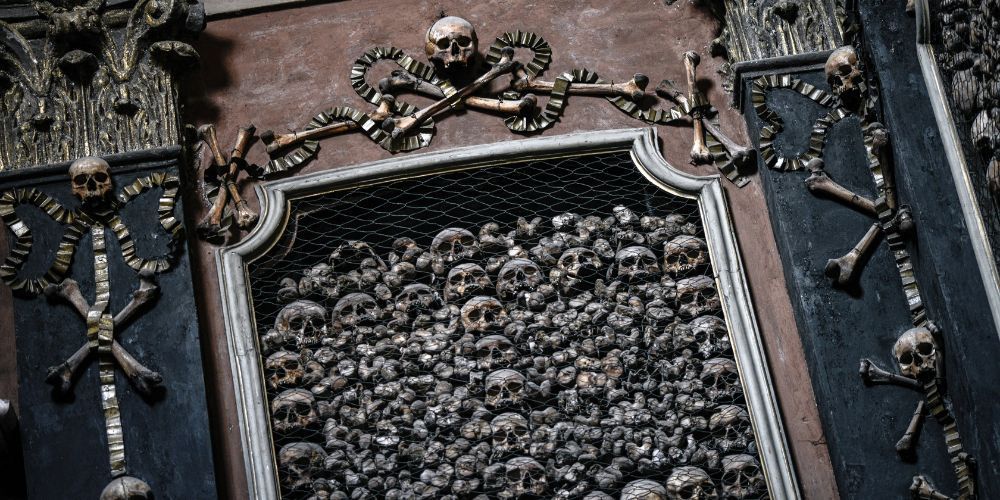
In the centre of Milan you will find one of the city's strangest and most surprising churches: in the Church of San Bernardino alle Ossa - literally St. Bernardine at the Bones - you will find a small chapel decorated with skulls, vertebrae and bones of all kinds. No, we are not on the set of a horror film, in the Ossuary of the church where the remains of the bodies of the now-destroyed Brolo Hospital, dedicated to the care of lepers, and the bodies transferred from the suppressed seventeenth-century cemeteries are kept.
A real memento mori in the centre of Milan, incredibly fascinating.
Explore the Castello Sforzesco, another symbol of Milan17. The Devil's House in the Gorge of Bellano
If you are planning a trip to Lake Como, a walk to the Orrido di Bellano must be on your bucket list.
The Orrido is a gorge that was formed millions of years ago by the Pioverna stream, which created beautiful caves to be admired thanks to the footbridges that connect its banks.
At the beginning of the path leading to the Orrido is the Casa del Diavolo (House of the Devil), a turret erected close to the river. It is thought to have served to control lake navigation in the 17th century, but its name is linked to the mythological figures, including a satyr, decorating the top floor facade. Given the esoteric symbols there, many people are ready to swear that satanic or pagan rituals were celebrated there until recently.
16. Triora, the village of witches
Hidden in the hinterland of Liguria stands a village famous for the largest witchcraft trial that took place in Italy. Toward the end of the 16th century in Triora, more than 300 women were accused of witchcraft , tried, tortured and killed, so much so that the village earned the name “Italian Salem”. And of course we cannot but include it in our list of the most esoteric places in Italy.
Now the village is home to the Ethnographic Museum of Witchcraft, and on the first Sunday after Ferragosto there is a festival to honor it, the Strigora.
15. Dragon's rib in the Sanctuary of Sombreno
The Sanctuary of the Nativity of the Virgin Mary in Sombreno, in the province of Bergamo, is one of the sacred places in northern Italy that holds a little mystery: by a chain hanging from the ceiling, a gigantic rib (almost 2 meters long) belonging to an animal, the Tarantasio dragon, is attached.
Legend tells that around the year 1000 AD, near Milan, there was Lake Gerundo, occupied by a fierce dragon that fed on anyone who dared to approach to fish and made everyone sick with its pestilential breath. It was defeated by the valiant Umberto Visconti, who decided to depict the dragon on the herald of his family, founders of the city of Milan. Tarantasio's skeleton was divided into several parts and kept in various places in northern Italy.
The rib found in Sombreno is still a mystery to all scholars and paleontologists.
14. The Devil's Bridge in Pavia
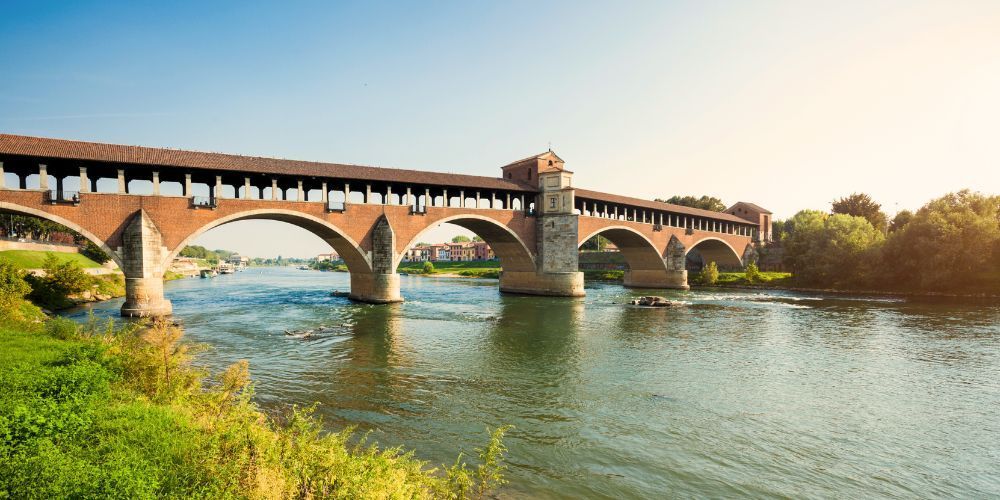
Travelling around Italy, you will easily come across towns and small cities crossed by rivers and with numerous bridges creating beautiful landscapes; it is also easy to come across the legend that one of these bridges was erected with the help of the Devil himself.
For Pavia, the bridge is the scenic Ponte Coperto (Covered Bridge) over the Ticino river, which shares the legend of the Devil's hand with other cities.
The origins of this story date back to the Middle Ages, a time when these structures marked a milestone in ancient architecture, because they were so complex and daring that their construction was thought to have been made possible only by a Luciferian artifice, in exchange for citizens souls.
Pavia's Covered Bridge, to ward off any evil forces, has a small chapel in the middle.
13. The Scarzuola and the union of the sacred and profane
Umbria is famous for its esoteric places, and in the province of Terni you can find a place that combines religion and mysticism. In the lands next to the convent that St. Francis founded in 1218, stands Tomaso Buzzi's so-called Ideal City, a symbolic and alchemical path made up of surrealist architecture, with staircases branching off in all directions, buildings and monuments crowded together, monsters and deliberate disproportions.
La Scarzuola creates a link between the sacred city constituted by the Franciscan monastery and Buzzi's profane city, a link made even stronger by the flow of sacred water that St. Francis caused to flow from a rose and laurel bush.
A truly unmissable mystical and surreal journey that clearly must be included in the most esoteric places in Italy!
12. The underground cities of Camerano and Osimo
Just a short distance from Ancona there are two treasures of priceless value: the caves of Camerano and Osimo, actually underground cities that extend for miles below the surface.
Dating back to the period of the first settlements by the Picenes, they have been used for a variety of purposes over the centuries, from a refuge for people to a place of preservation for food and wine. But in this maze wonderfully survived over the course of time you will easily come across pagan and religious altars, tombstones, decorations, friezes and ornamental motifs, as well as ruins of Masonic temples and symbols of the Templar Order.
11. San Galgano Abbey
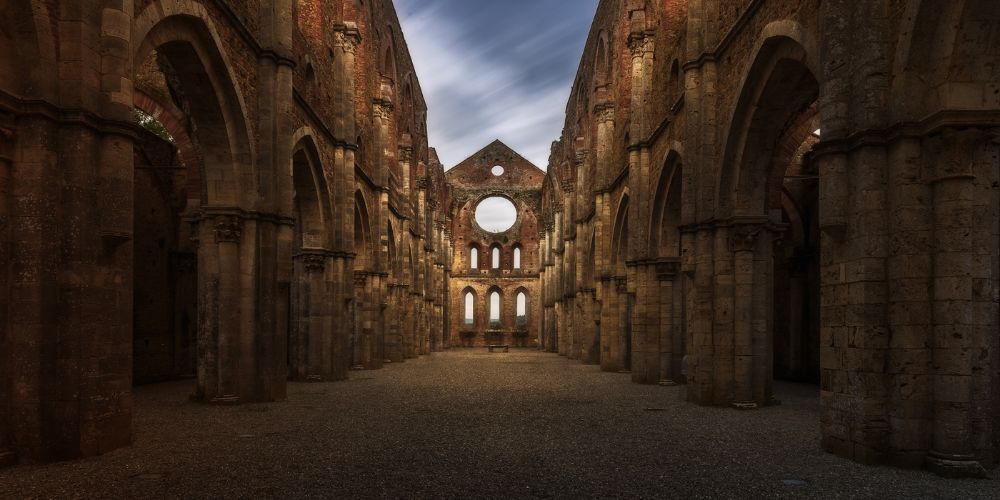
The legend of King Arthur becomes reality a few kilometres from Siena: in the Abbey of San Galgano, in Chiusdino, you can see the real Excalibur, the Sword in the Rock!
The beautiful Gothic church from the thirteenth century is dedicated to the saint who abandoned a violent and depraved life after receiving his vocation, thrusting his sword into a rock, a symbolic gesture, intending to turn it into a cross and thus begin his life as a hermit.
The atmosphere of this Gothic complex gains even more charm from the lack of a roof, bringing heaven and earth into communion in a breathtaking spectacle.
10. Bomarzo's Monsters Park
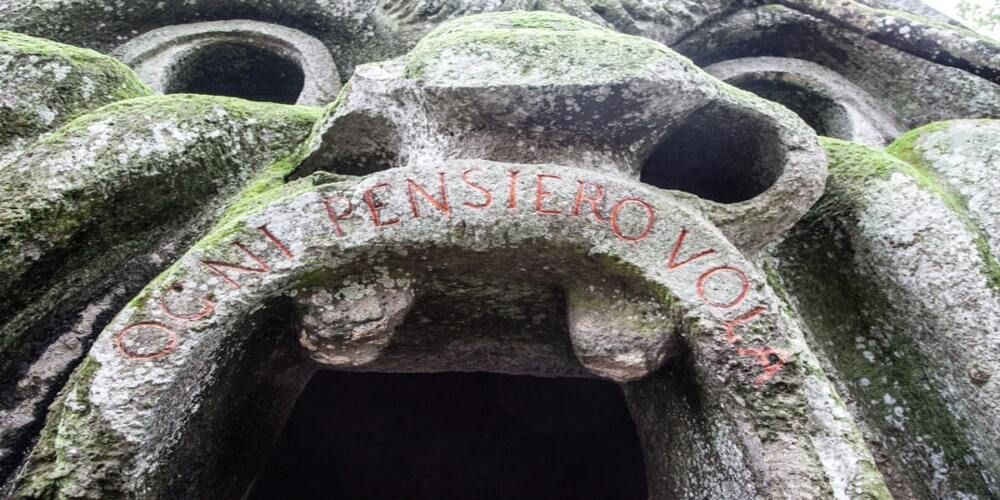
In Lazio's most mysterious village, Bomarzo, you can find the beautiful Sacred Wood, which is part of the Palazzo Orsini estate.
Known today as Monster Park, it was commissioned by Prince Orsini in the 16th century as a tribute to his late wife.
The park is a magical labyrinth, with statues, anthropomorphic and zoomorphic boulders, symbols of unknown meaning stimulating curiosity and imagination of visitors, who enjoy trying to find mutual hidden connections. Even the Master Salvador Dalì has been fascinated by its atmosphere.
Let yourself be charmed by the Monsters of Bomarzo and be sure to explore one of the most esoteric places in Italy!
9. The Alchemical Gate of Rome
In the 17th century, between Piazza Vittorio and the Esquiline Hill in Rome, stood Villa Palombara, home of the Marquis of Pietraforte, a famous alchemist. After the destruction of the villa, the Porta Alchemica is the only survivor of that building's five entrances, perhaps due to the magical aura surrounding it.
Legend tells that a doctor went to this villa looking for miraculous herbs, but he disappeared through the door, leaving only some pure gold sprinkles and notes with scribbled symbols at the entrance. The symbols are what you now see engraved on the door to be handed down to posterity and especially to those who, sooner or later, will be able to successfully decode them and solve the riddle of the doctor's experiment.
Don't miss the sacred side of Roma in Vatican Museums8. Rocchetta Mattei and electrohomeopathy
If you are passing through Bologna, do not miss Rocchetta Mattei, a truly amazing and special place to visit.
Built by Count Mattei starting in the mid-19th century, the fortress was modified several times, making it a labyrinth of towers, monumental staircases, reception rooms, and private rooms that recall different styles, from neo-medieval to neo-Renaissance, Moorish to Art Nouveau.
But not only the architecture catches the eye, rather the secrets behind the Count's medical practices: he is indeed known worldwide as the inventor of Electromeopathy, an alternative medicine that was inspired by homeopathy, Chinese medicine and herbalism, to which he added a dash of alchemy.
Even today his formulations are still the subject of study and discussion.
7. The painting of the damned soul in the Church of the Mission to the Virgins in Naples
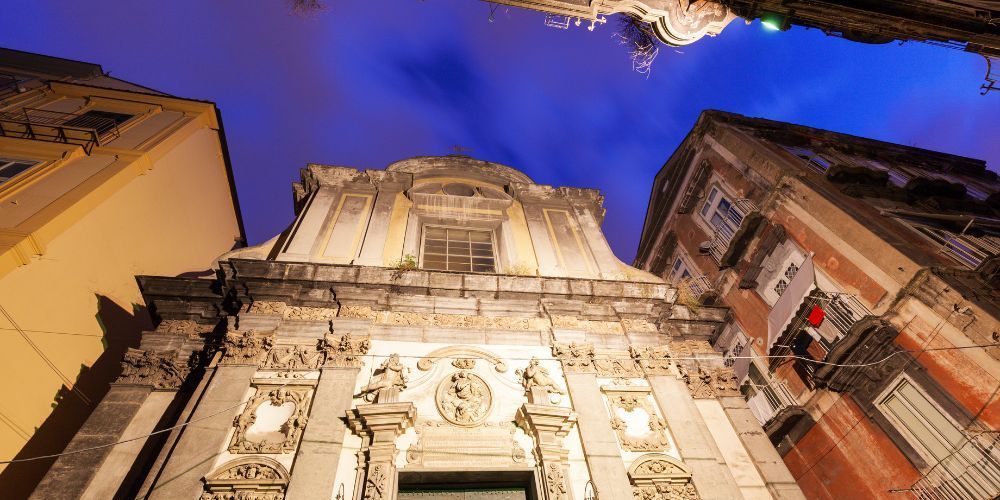
Strolling through the streets of one of the coolest neighbourhoods in the world, the Rione Sanità in Naples, you can find the Church of Santa Maria dei Vergini, a masterpiece by Luigi Vanvitelli and a model for religious architecture in Naples. The painting of the damned soul is kept in this church.
The legend tells of the adulterous passion between a young knight and a noblewoman who died without being able to repent his actions. The knight prayed unceasingly until, one day, the woman appeared and accused him of being the cause of his descent into hell and that God had sent her to tell him so, leaving a permanent mark of his damned soul. Her soul touched the painting with her hands, leaving the fiery fingerprints that can now be seen in the painting depicting Christ crucified.
Enjoy Naples mysticism6. The sunken city of Baia
Have you ever thought of visiting an underwater archaeological park?
Well yes, just a few kilometres from the centre of Naples, in Campi Flegrei, lies the sunken city of Baia, which in Roman times was a resort, entertainment and leisure centre, famous for its healing hot springs as well. Plundered and then abandoned, the remains of the luxurious city were slowly swallowed up by the sea.
Today, if you want to admire the crumbling structures and incredibly preserved statuary of the city, you can do so by glass-bottom boats, snorkeling or diving.
5. The Entrance to the World of the Dead at the Archaeological Park of Cumae
From Virgil to Dante, from Leopardi to Galileo, many scholars and philosophers have thought that one of the gates to hell was located here, in the Archaeological Park of Cumae beside Lake Avernus, near Pozzuoli. This is undoubtedly one of the most esoteric places in Italy, a tunnel of more than 130 meters carved into the tufa between the seventh and sixth centuries B.C., the same one that Virgil made Aeneas pass through in the epic poem to enter Hades and find his father Anchises. And it is also the place that led to the Cavern where the Cumana Sibyl pronounced her prophecies.
Fueling the ancient belief are precisely the natural phenomena associated with Lake Avernus, literally “birdless”: indeed, even on the brightest days, no birds are seen flying over the water or nesting in the surrounding foliage. Will it be the sulfurous vapors from the infernal cavern below to disturb them?
4. The symbolism of Castel del Monte in Andria
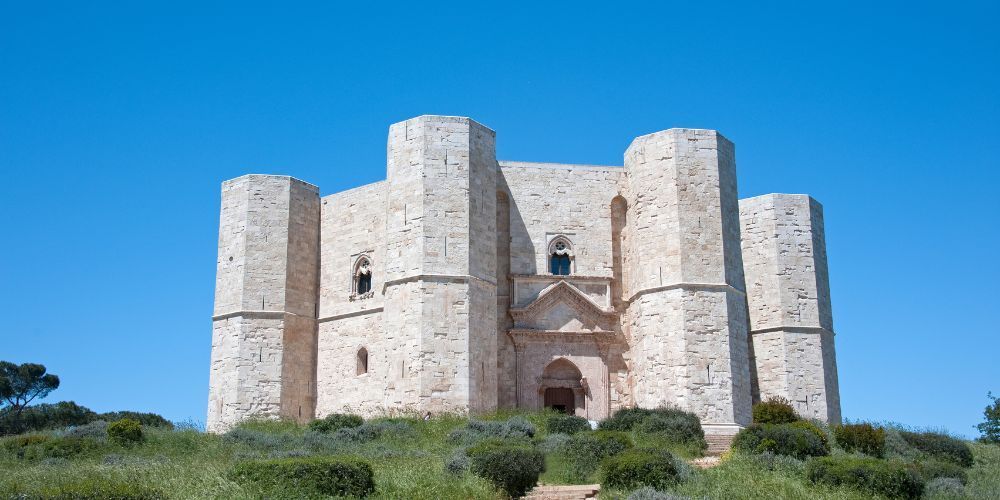
Set on a rise into seemingly nowhere, with no street to protect or estate to administer, Castel del Monte in Andria, Apulia, was built in the 13th century by Emperor Frederick II. It was apparently intended to be a hunting lodge, but more careful studies of its embodied symbolism have suggested otherwise.
One of the special features of the place is the recurrence of the number eight: the building has an octagonal floor plan with an octagonal tower in each corner, contains eight rooms, housed an octagonal basin, and contains numerous decorative elements in series of eight inside. Certainly an unusual shape for a castle, but the octagon would seem to be rich in symbolism due to its intermediate shape between the square (the earth) and the circle (the sky), and would represent the transition from one to the other.
Furthermore, by observing the shadows that the building casts at particular times of the year, such as solstices and equinoxes, it seems possible that the castle is actually a massive gnomon, the pole that ancient people planted in the ground to measure the hours of the day by the length of the shadows.
3. Castle Ursino in Catania
Originally guarding the gulf, Ursino Castle is the oldest monument in Catania.
Built by Frederick II of Swabia to assert his supremacy over the people and to discourage any revolt, the castle shows in its construction the emperor's passion for physics, astronomy and mathematics, considered at the time as the only method to enter into perfect harmony with the universe: the square shape chosen for the castle plan alludes to the earth and the dominion over earthly and physical manifestation.
The mysterious charm of the Ursino Castle is given above all by the metaphysical symbols that decorate it, such as Solomon's Knot visible on the cross in the courtyard, or the five-pointed star, located on the Levant balconies, whose internal pentagram symbolizes the five metaphysical elements of water, air, fire, earth and spirit.
But the monument draws paranormal enthusiasts for the phenomena that happen very often within its walls - doors opening or creaking, screams, sinister noises, witnessed over time by insiders and visitors.
2. The Catacombs of the Capuchins in Palermo
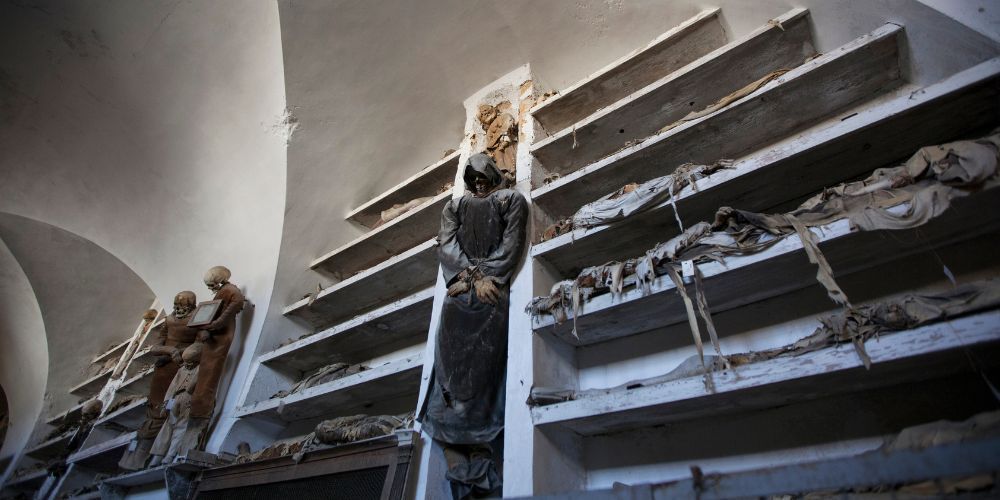
Dating back to the 16th century A.D., the catacombs of Palermo are a remarkable one-of-a-kind site and among the most impressive in the world. On your walk through the tunnels you will be accompanied by more than 2,000 mummies, standing or lying, richly attired and divided by age, sex and social category.
Initially the burial place of the Capuchin Friars, when the excavations were expanded, the friars noticed that some bodies had mummified naturally. Later, burial was officially granted to anyone who could afford the cost of embalming. Here you can find the “most beautiful mummy in the world”, namely that of Rosalia Lombardo, who died in 1920 when she was only two years old.
1. The devils in the Palace of Zisa , Palermo
The palace of the Zisa (from the Arabic El-Aziz, meaning 'Splendid') stood outside the city walls of Palermo, within the Norman royal park, the Genoardo, with bright pavilions, verdant gardens and pools of water.
Apparently, inside the palace was the treasure of an Arab sultan protected by a spell and by the devils portrayed in the fresco in the fountain room: the only way to access the riches would be to count the exact number of demons, arranged in a circular fashion to make calculation almost impossible.
Discover Palermo and its secretsMost esoteric places in Italy for a trip out of the ordinary
Our mystical journey is concluded, but we are sure that in addition to these 20 most esoteric places in Italy there are many others, perhaps not so famous or too far from the tourist routes.
Nevertheless, leaving skepticism aside and agreeing to be surprised by their mysterious atmospheres, these locations represent a unique opportunity to admire the architectural wonders, even if slightly out of the ordinary, for example for a weekend getaway during the Halloween season. If, of course, you have enough guts not to be intimidated.
About the author
Written on 29/08/2023

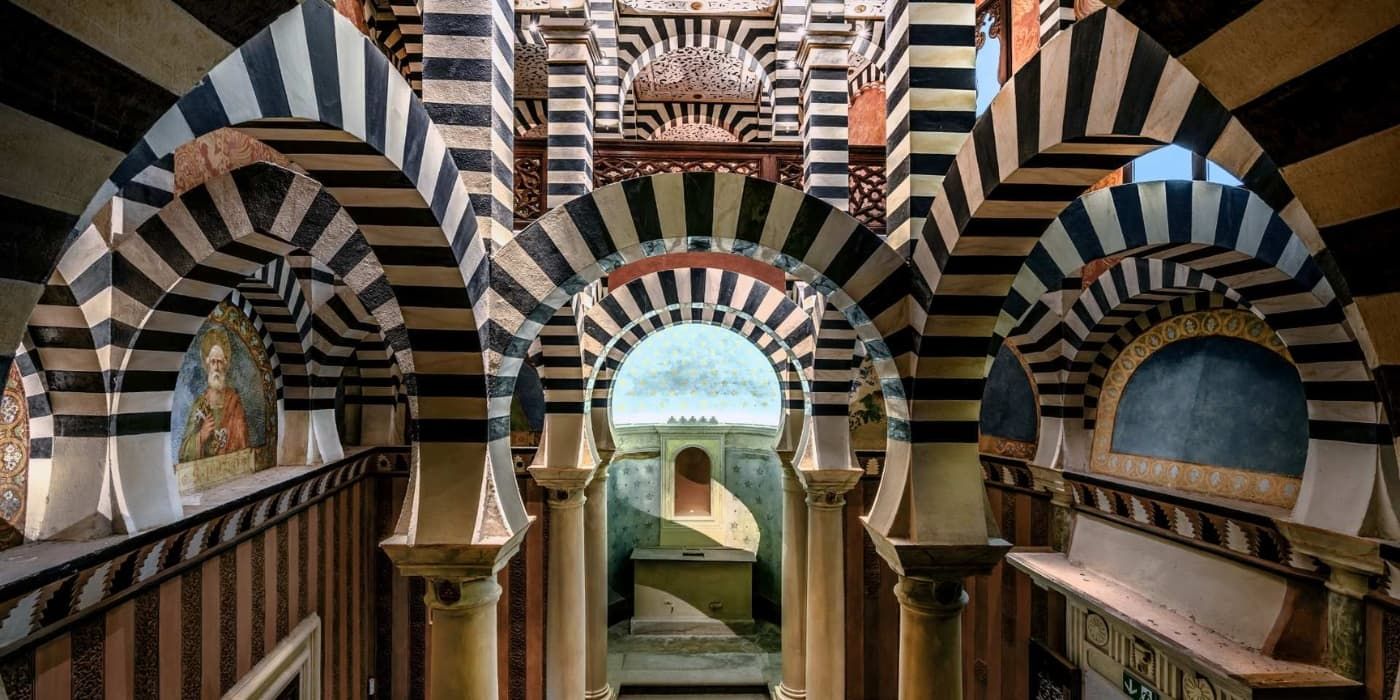

Linda Zucca Bernardo
With its millenary history, Italy hides many mysterious and fascinating spots: here are the 20 most esoteric places in Italy among castle and villages